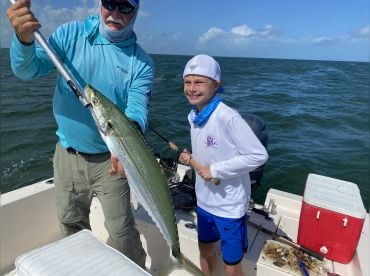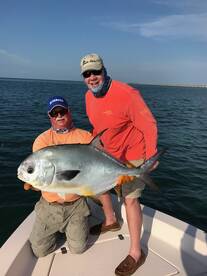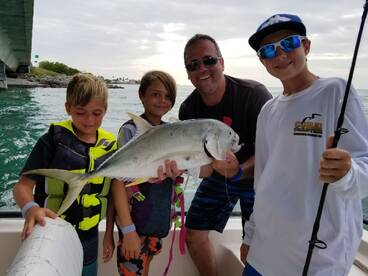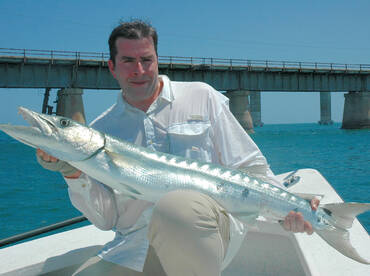May & June Fishing Report
May 01, 2017
Marathon
1 photo
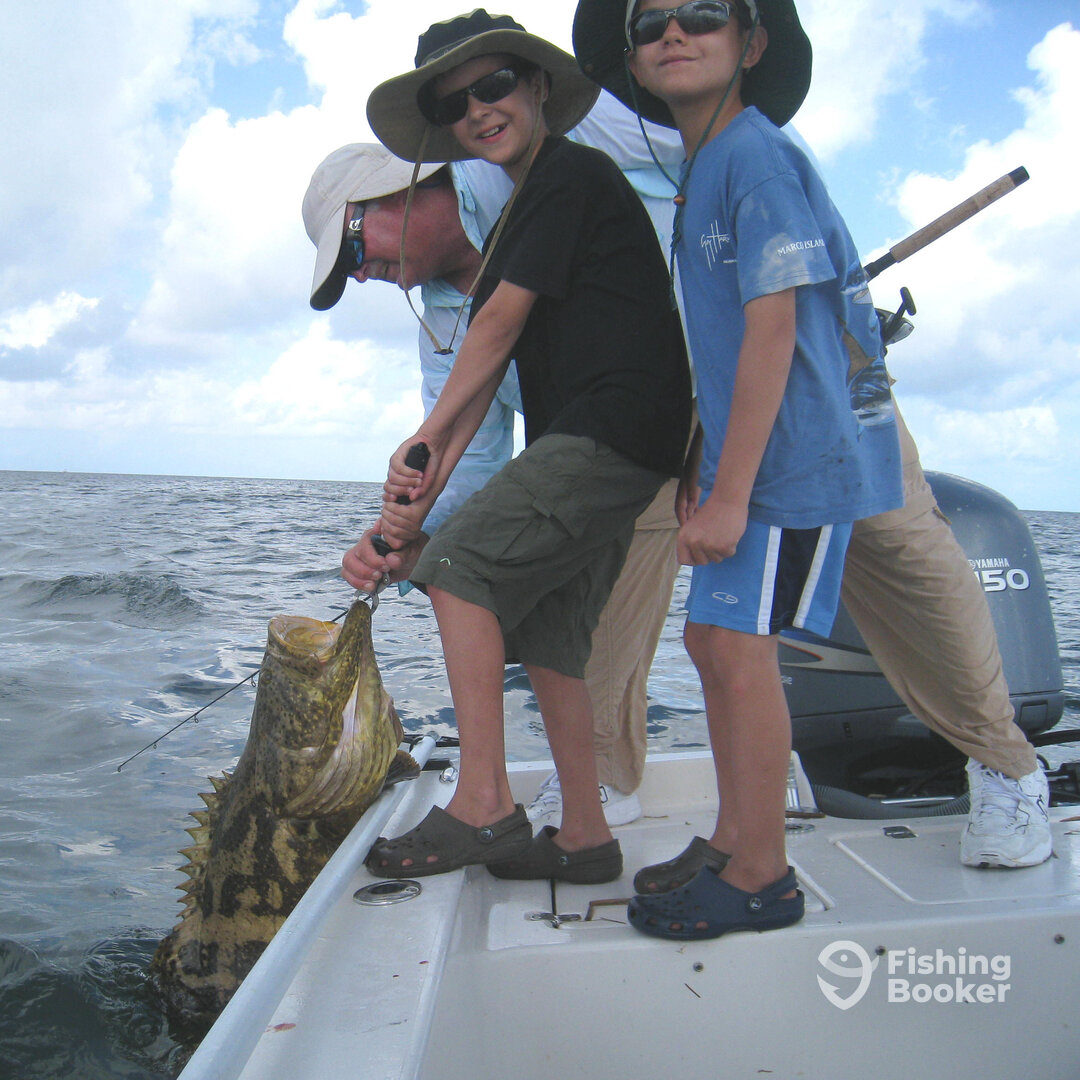
Trip Summary
Trip Summary
Primetime! That’s what the months of May and June are to the backcountry and inshore angler. Water temperatures are in that perfect 74 to 78 degree range during this period, and the weather pattern has switched from the constant northerly winds (compliments of winter cold fronts), to light balmy breezes from the east and southeast.
First of all, if you’ve ever wanted to catch a tarpon, now is the time! Any reader who hasn’t experienced the thrill of watching a hungry “silver king” chase down a frantic mullet, and then explode out of the water upon being hooked is missing one of sportfishing’s greatest thrills. The high percentage bet is to anchor or drift fish near the bridges and backcountry channels with 20 to 30 pound tackle and live bait. Silver mullet are the best bait during May; in June when the mullet are leaving the area, pinfish and crabs are excellent producers.
Those anglers seeking to take their tarpon fishing to the next level can sight cast to these mighty fish up on the oceanside flats during May and June. A 15 lb. spinning outfit with a large live shrimp or crab makes a good choice. And perhaps the ultimate challenge of all is to take them on fly.
This is a good time to mention the important but often forgotten concept of flats etiquette. During the spring large numbers of tarpon travel along the edge of oceanside and backcountry flats. Professional guides and knowledgeable private boat anglers will stake out along the edge of these flats in hopes of ambushing these traveling tarpon. When an unknowing or uncaring boater or jet ski operator runs his watercraft down the edge of a flat, he’ll blow those fish off the edge into deeper water making them impossible to catch. This is a tremendously frustrating situation both for the guide (whose reputation for finding fish is on the line) and for his client (who has spent a substantial sum of money to come to the Keys to fish our flats). Some pretty nasty on the water confrontations take place at this time between fishermen and recreational boaters, with insults and threats being the norm, not the exception.
I’m willing to acknowledge the fact that the flats are a resource to be shared by all. With that in mind I’d like to share a few thoughts that if practiced, could lead to a greater degree of harmony up on the flats during the Spring.
1. Stay at least 100 yards from the edge of the flats when running a boat or personal watercraft in an area where fishermen are present.
2. If you must access a flat do so at idle speed and at a 90 degree angle to the flat.
3. Try to determine the predominant direction the anglers are looking toward as this will indicate where the fish are coming from. Access the flat from behind the fishermen instead of in front of them.
These three tips will go a long way in improving backcountry relations among the various user groups. There’s room for all of us out there, so long as we treat each other and the environment with respect.
Tarpon aren’t the only show in town during the Spring! Expect excellent cooperation from bonefish and permit during May and June, especially during the two to three day period before the new of full moon. The upper and lower tide ranges increase greatly during this time, making it an exciting time to be a fish in the Florida Keys backcountry. This translates into hot action for the knowledgeable angler who knows the right time during a given tide to fish each flat.
Back in Everglades National Park look for excellent action with large seatrout. Ideally, a well full of live pilchards (small to medium) will produce the best catches, but a 1/4 oz. white shrimp-tipped jig will produce well also. Sight fishing for reds on the flats is always good at this time too, and with the winds being down, it’s a great time to target them on fly.
Don’t forget that May is the last month you can keep a snook until September (size limit – 26″ to 34″…limit two per person). That shouldn’t stop anglers from experiencing some fine catch and release fishing at the creek mouths (live pilchards, pinfish, or finger mullet are prime baits). Nor does it mean that anglers should feel compelled to kill every legal sized snook they catch just because it’s still May.
Florida Bay should still be productive for mangrove snapper through May, although a switch to “shy gear” (smaller hooks and leads, and lighter leaders) may be in order to fool them in the clear water. After May the mangrove snapper will be pushing out of the bay, through the bridges, and out on the reef to spawn. During this transition though, the best snapper fishing of the year will take place at the bridges.

